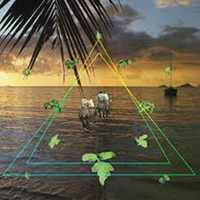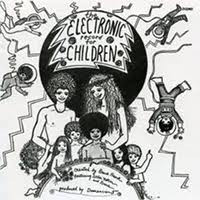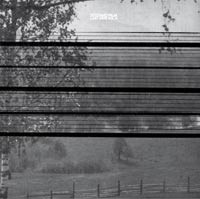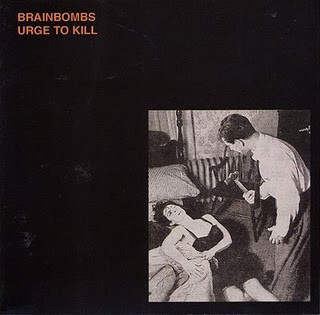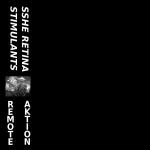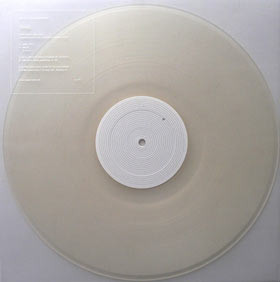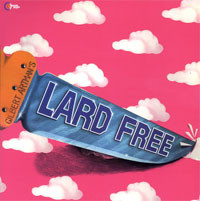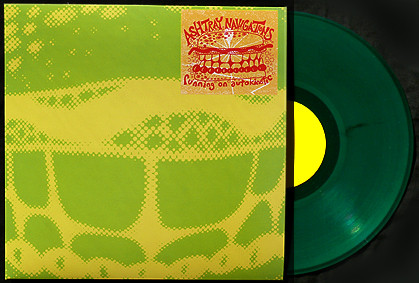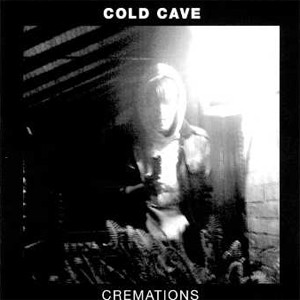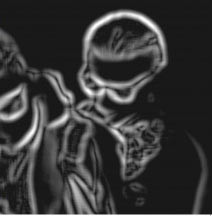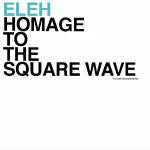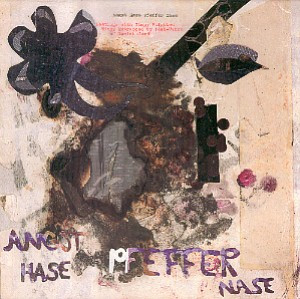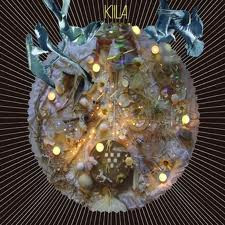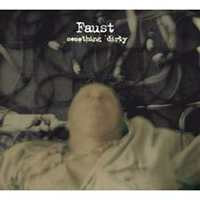Back in stock
Beach Head
Originally issued in a limited pressing in 2008, BEACH HEAD is a release of sunburnt affection for a place that has since submerged: a coastal constellation of friends and energies that still slosh and burn through dimensions just above our perceptual apparatus. These are the coordinates, should you want to go: THOUGHTS ARE BELLS opens in séance before easing back into full Florian blossom. HORSE STEPPIN’ is a love song to Neil Young’s six-string gateway: sunblushed and indulgent, persistently b…
The Electronic Record For Children
"Recorded in 1969 , early electronic music pioneer Bruce Haack and child educator Ms. Nelson go bravely and deeply into psychedelic music compositions designed to open the minds and hearts of the young. Truly far out electronic music that evokes a space age alternate universe. Bruce and Ms. Nelson are joined by pianist Praxietellis Pandit and their relaxed sounding friend Chris to bring you songs about everything from ancient folk tales to outerspace to what the world sounds like when y…
Dreams
Dreams is a reissue of Chris Forsyth's second solo album. In 2009 Forsyth pressed up 100 LPs for a European tour and created quite an uproar of approval by the heads who managed to score a copy. Now available again, Dreams rightfully shows Forsyth at the creme of American guitarists who blend masterful skill of country/blues with sometimes violent aggression or mind-bending arrangements. Dreams was recorded and mixed between 2007 and 2009 and catches Forsyth in the studio layering acoustic and e…
Last Days III - Atlantic City
Following volume I (8mm, 2008) and II (Presto?!. 2009), and previously released in a super small cassette edition on Tulip, Stefano Pilia's Last Days III is finally available in a new remastered one sided LP edition. The intuitions of the first two chapters of this series of 'Last days' shine in 'Atlantic City' in all their beauty. Stefano’s touch is so warm and gentle, always unique in creating that feeling of soft, warm nostalgia, loud, and passionate as he’s strumming his strings with …
Urge To Kill
Nobody knows what a Brainbomb is, but with the sounds of this record strapped close to your skull you will not need your fancy pants college thesaurus to figure out exactly what the meaning is. This record is maximum, in-the-red and dealing with more issues than a year of after school specials. Sounds like a fried out speaker blowing a mix of Detroit fueled orgy fun and evil bad-assery. Driving around in your car, being tired, picking up hitchhikers and killing them with hammers and scre…
Chaos 1978-86
Unless Sun Ra's most out there moments, one of many behavioral components from Chaos 1978-86, were beamed alongside televised presidential messages for years, or the ravenous fire from Jimi Hendrix's burning guitar had a heated soundtrack of its own on the Billboard charts, it's hard to imagine anyone being ready for this crazy shit in the early 80s. The appropriately named Wicked Witch, a richly decadent and spooky avant-garde affair of off-kilter rhythm and blues-based x-spunk, was the masterm…
Sticks, stones & breaking bones
restocked: "the hardest thing in the world is to have an original idea. As much as creative musicians hate to admit, free improv/experimental/underground (and all other useless adjectival identifiers) music now has as many stylistic tropes as your standard 19th century symphony: the endless variations on white noise, the orgiastic free ensemble climaxes, reassuring bass drones, "brutality", all of which point to performance, not playing. Musicians cling to the next solution that the med…
Elemental Disgrace
Cut at Dubplates & Mastering, Berlin August 2011. 'Elemental Disgrace' is an album that needs to happen now. Finally, the next phase has arrived - a stunning double side-long record of some of the U.S. best underground synthesizer music we have heard here at the Spectrum Spools headquarters. Whatever rise to the synthesizer came later on in the 00's is hardly of any concern to Greh Holger and his Hive Mind project. Having released private press cassettes of solo synth works as far back as 2002, …
Remote Aktion
Two years after releasing SRS' 'Heaven 39' 2LP, Diophantine Discs is happy to release a record of new recordings by Sshe Retina Stimulants! Following in a vein similar to his other recent recordings this year, we are presented with four tracks of very abstract and experimental noise music. Using a variety of treated and processed instruments and electronics, this is surely one of the most complex, intense, and dynamic works by SRS. Sshe Retina Stimulants, the project of P.NG5361.B (Paolo Bandera…
Revep
LAST COPIES Now deleted, this is the super-limited transparent vinyl. Revolving around a collaborative new arrangement of Sakamoto's classic 'Merry Christmas Mr. Lawrence', this third outing for Carsten Nicolai and Ryuichi Sakamoto has been once again packaged and delivered with utmost attention to detail from the quite remarkable Raster Noton imprint. Designed to accompany their extensive tour through much of Asia and Europe this Summer, 'Revep' is another indispensible record from two absolute…
Gilbert Artman's Lard Free
Lard Free is French psychedelic minimalism band, formed around drummer and keyboards player Gilbert Artman. He was the only constant member of the band on their few next albums. Music on their debut album is perfectly composed angular rhythm structures-based synth/rhythm compositions with free-jazz sax improvs over them. All this mix sounds heavy, spacey, psychedelic, minimalistic - and excellent. I am not sure if this music could be labelled as "krautrock" , or let say - it's a French krautroc…
Running on autokinetic
classic Ashtray Navigations, two hallucino-kinetic tracks each side
Cremations
Absolutely mindblowing album of layered, distorted and decimated 80's synthpop meets MBV style sonic devastation - one of the albums of the year!* Occasionally artists crop up that manage to extract tangible yet ambiguous feelings of darkness while somehow pushing musical boundaries without pause for breath. Cold Cave is one of those artists. His 'Cremations' album for Dominic Fernow's Hosptial imprint is a collection of two EPs and one LP released over the last 18 months, traversing the …
Untitled
Ver last copies: Reissue of the first Absolute Body Control-Tape (Originally released as cassette "Untitled" on Body Records 1981 ) which came as part of the long sold-out Absolute Body Control Vinyl-Box-Set (VOD37). The reissue is in red Vinyl and lmtd. to 444
Dungeon Dots
Debut LP. Nicole Schneit's soft, clear voice careens across walking bass lines, big cymbals & brassy guitars. Warm, inviting & bittersweet. Features Sharon Van Etten.
Homage to the Square Wave
RESTOCKED last copies, Eleh present their fourth vinyl-only full-length, Homage to the Square Wave. Featuring two sidelong tracks each clocking-in at over 20 minutes, Homage is dedicated to the highly influential artist Josef Albers. Eleh return with their battery of vintage modular analog gear to produce a recording of pure tone, pure sound, pure volume and pure analog. Side A features 'Black,' a slowly enveloping mass of intensely throbbing low end, activating the flight response. Time passes …
Beatings With Gimpy Flighted Wings Entrapped By Post-Fence Of Ga
EXCLUSIVE! Member of CAROLINER RAINBOW & DEERHOOF. Some may call these tunes brashly harsh, some might call it electronic composition, others may think it to be the sounds of rusty robots mating. Oh no, this is none of those, this is hardcore done with wires, lo-tech tape manipulation, bits of synth, home rigged effects, and a whole bunch of other crap.
Fiteiras Suadas
Clear azul vinyl, artwork by Joana Da Conceicao. For sure one of the weirdest and most unique records on Qbico, thanks to this young couple from Porto; hard to explain, no easy listening... but once you get attuned, it grows on you... deeply. Some vague similarities with the Astral Social Club LP.
Tuota tuota
"tuota tuota is the third full-length album by kiila. its songs were born of peaceful, focused work and intense rehearsals with friends, interspersed with sleep and mealtimes. the album features an eight-strong core line-up but, as always, the composition of the group varies effortlessly according to need. at this table, there is room for everyone. as musical form, songs have always been important to kiila, and consequently tuota tuota develops around its songs. on the other hand, the album cons…
Something dirty
"exactly 40 years after their debut, faust have come up with another archetypical album: inspiring, innovative, unpredictable, crossing boundaries, anarchic - faustian! with "something dirty" jean-hervé peron, zappi w. diermaier (both founding members), james johnston (gallon drunk, nick cave & the bad seeds), and geraldine swayne (...bender) created a definitive milestone in the longfamous musical institution from hamburg." (label info)
